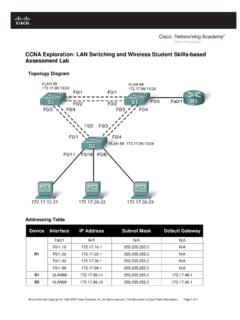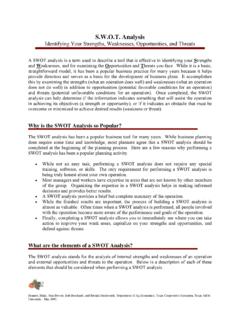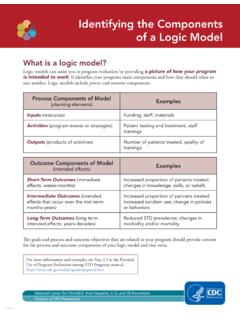Transcription of Identifying Exponential Functions from a Table
1 Section Exponential Functions Definition of an Exponential Function An Exponential function is a function that can be represented by the equation f(x) = abx where a and b are constants, b > 0 and b 1. The independent variable is in the exponent. Ex. f(x) = 2x is an Exponential function, but f(x) = x2 is not, because the variable is not in the Identify the equations of Exponential Functions . For those that are Exponential , identify a and )f(x) = ( )x b.)f(x) = x c.)f(x) = 5(3)x d.)f(x) = 4( )x e.)f(x) = 7x3 131312 Identifying Exponential Functions from a Table A function is said to be an Exponential function if equal steps in the independent variable produce equal ratios for the dependent variable. Ex. Does the following Table represent an Exponential function?
2 If so, is the function a decay or growth model? x 2 1 0 1 2 3 f(x)1913 1 3 9 27 Graphing Exponential Make a Table of values for each Exponential function. Plot the points and sketch the graph. State the domain and the )g(x) = 3 (2)x continued Make a Table of values for each Exponential function. Plot the points and sketch the graph. State the domain and the )g(x) = ( )x c.)h(x) = 2( )x (try on at Table ) Identify which graphs represent Exponential Functions . For those that are Exponential , tell whether they represent growth or )b.)c.)d.)Characteristics of Exponential Functions : For the Exponential function f(x) = abx and a > 0: Same shape one end steep and the other seems almost flat Domain : Range : (range relates to horizontal asymptote) Horizontal Asymptote: horizontal line that the graph gets really really close to, but never reaches and never intersects Vertical Intercept (0, a) Increasing (growth) if b >1 Decreasing (decay) if 0 < b < Determine whether each Table represents an Exponential function.
3 If it is Exponential , give the common ratio and decide if it represents Exponential growth or decay. a.) b.)c.) d.) x 0 1 2 3 4 5 f(x)1 3 9 27 81243 x 4 2 0 2 4 6 f(x) 31634 3 12 48192 x 3 2 1 0 1 2 f(x) 16 8 4 2 112x 202468f(x) 137111519 Writing Exponential Functions Lets look back at the graphs and compare them with their equations. What do you notice about the vertical intercept? Lets look back at the tables and compare them with their equations. What do you notice about the common ratio? Exponential Functions : A function that can be represented by the equation f(x) = abx for b > 0 and b 1, where a is the vertical intercept, and the base, b, is the common ratio (assumed to be based on steps of 1).
4 Find the equation for the Exponential function represented by the Table . Identify whether the equation represents a growth or decay )b.)c.) x 2 1 0 1 2 f(x)2923 2 6 18 x 2 1 0 1 2 f(x) 16 4 114 116 x 2 1 0 1 2 f(x) 25 10 4851625















